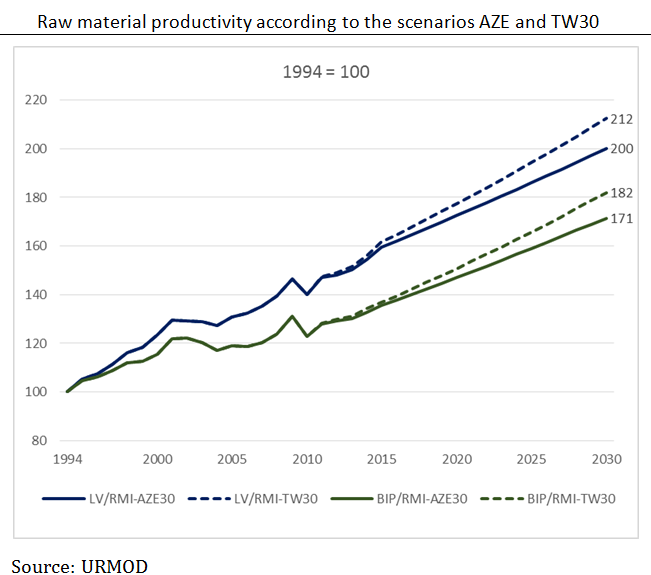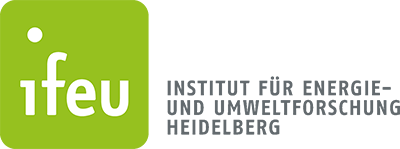DeteRess – Structural and Technical Determinants of Resource Efficiency

In 2002 the German Federal Government selected “resource productivity” as one of the key indicators for the national strategy of sustainable development. It expresses how much of the GDP in euro can be generated by using a tonne of abiotic primary material. The use of primary material is indispensable for our economy but it also causes environmental burdens. Additionally, exploited raw materials that are non-renewable natural resources will no longer be available for future generations.
A well-considered use of raw materials and especially of finite raw materials is therefore crucial. The German Federal Government has set the goal to double the resource productivity between 1994 and 2020.
The importance of the subject was also emphasized by the Government in setting up the resource efficiency program ProgRess in the year 2012. In the meantime this national resource strategy is connected to the European strategy “Resource Efficient Europe” and the related roadmap.
The necessary action in this policy field is often confronted with a lack of knowledge on how to achieve the doubling of resource productivity in Germany by 2020. The fundamental question of which objectives can be achieved at all by a national resource strategy plays a role here as well as the question about emerging countries – which conditions apply for their economies to catch up with industrialized countries.
Objective of the research project
The research project tackles the specific knowledge gap about which saving potentials for raw materials can be reached exclusively through technical or structural measures. The fundamental question of a resource-saving life style as such is not the core question; rather the project is designed to shed light on the limits of resource efficiency solely based on technical and structural measures.
The objective of the research project is to assess the opportunities and limits of a technically oriented policy of dematerialization in Germany taking into account existing path dependencies, trajectories and barriers. Changes of lifestyle or dramatic impacts on consumption patterns shall not be regarded due to the design of the study. With this approach it should become obvious which potential measures such as material substitution or recycling have and when additional measures need to be applied.
A prerequisite for the reasonable answer to this question includes evaluating the effective conservation of raw material, not only restricting them to the savings on German territory. Thus the material backpacks that include imported materials (e.g. pure metals) or (semi-) finished products need to also be regarded. Following this approach, it can be excluded that raw material savings will be accomplished by shifting national production of basic materials to other countries.
Runtime
April 2013 – December 2016
Client
Umweltbundesamt (Federal Environment Agency)
Partner
ISI Fraunhofer Institute for Systems an Innovation Research
SSG Sustainable Solutions Germany
Info
Final Report (in German, pdf, 6 MB)
